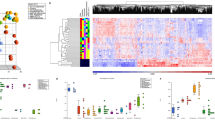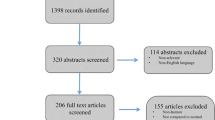Abstract
Plurihormonal pituitary adenomas (PHPAs) are defined as those pituitary adenomas secreting two or more hormones that differ in chemical composition, immunoreactivity, and biologic effects. Since the pathogenesis of these adenomas is not well understood, our study aimed to explore mechanisms underlying the pathogenesis of PHPAs. We used bead-based fiber-optic arrays (Illumina Human GeneChip WG-6 v3.0) to examine the gene expression profiles in seven PHPAs compared with three normal pituitary glands. Four differentially expressed genes were chosen randomly for validation by quantitative real-time reverse-transcription polymerase chain reaction. We then performed pathway analysis of all differentially expressed genes using the Kyoto Encyclopedia of Genes and Genomes. Our array analysis showed significant increases in the expression of 6 genes and decreases in 334 genes and 15 expressed sequence tags in the PHPAs. Bioinformatic analysis showed that genes HIGD1B, EPS8, ECT2, and BTG2 might play an important role in the tumorigenesis and progression of PHPAs. Pathway analysis showed that the p53 and Notch signaling pathways may play an important role in tumorigenesis and progression of PHPAs, and extracellular matrix (ECM)–receptor interactions likely play a role in the inhibition of invasion and metastasis in these tumors. Our data suggested that there are numerous aberrantly expressed genes and pathways involved in the pathogenesis of PHPAs. Bead-based fiber-optic arrays combined with pathway analysis of gene expression data appears to be a valid method for investigating the pathogenesis of tumors.

Similar content being viewed by others
References
Ho DM, Hsu CY, Ting LT, Chiang H (2001) Plurihormonal pituitary adenomas: immunostaining of all pituitary hormones is mandatory for correct classification. Histopathology 39:310–319
Kameya T, Furuhata S (1991) Plurihormonal adenomas. Analysis of 62 cases. Pathol Res Pract 187:574–576
Kageyama K, Nigawara T, Kamata Y, Terui K, Anzai J, Sakihara S, Suda T (2002) A multihormonal pituitary adenoma with growth hormone and adrenocorticotropic hormone production, causing acromegaly and Cushing disease. Am J Med Sci 324:326–330
Mao S, Dong G (2005) Discovery of highly differentiative gene groups from microarray gene expression data using the gene club approach. J Bioinform Comput Biol 3:1263–1280
Ellestad LE, Carre W, Muchow M, Jenkins SA, Wang X, Cogburn LA, Porter TE (2006) Gene expression profiling during cellular differentiation in the embryonic pituitary gland using cDNA microarrays. Physiol Genomics 25:414–425
Tarca AL, Romero R, Draghici S (2006) Analysis of microarray experiments of gene expression profiling. Am J Obstet Gynecol 195:373–388
Denko N, Schindler C, Koong A, Laderoute K, Green C, Giaccia A (2000) Epigenetic regulation of gene expression in cervical cancer cells by the tumor microenvironment. Clin Cancer Res 6:480–487
Xu M, Shorts-Cary L, Knox AJ, Kleinsmidt-DeMasters B, Lillehei K, Wierman ME (2009) Epidermal growth factor receptor pathway substrate 8 is overexpressed in human pituitary tumors: role in proliferation and survival. Endocrinology 150:2064–2071
Miki T, Smith CL, Long JE, Eva A, Fleming TP (1993) Oncogene ect2 is related to regulators of small GTP-binding proteins. Nature 362:462–465
Tatsumoto T, Xie X, Blumenthal R, Okamoto I, Miki T (1999) Human ECT2 is an exchange factor for Rho GTPases, phosphorylated in G2/M phases, and involved in cytokinesis. J Cell Biol 147:921–928
Petronczki M, Glotzer M, Kraut N, Peters JM (2007) Polo-like kinase 1 triggers the initiation of cytokinesis in human cells by promoting recruitment of the RhoGEF Ect2 to the central spindle. Dev Cell 12:713–725
Sano M, Genkai N, Yajima N, Tsuchiya N, Homma J, Tanaka R, Miki T, Yamanaka R (2006) Expression level of ECT2 proto-oncogene correlates with prognosis in glioma patients. Oncol Rep 16:1093–1098
Rouault JP, Falette N, Guehenneux F, Guillot C, Rimokh R, Wang Q, Berthet C, Moyret-Lalle C, Savatier P, Pain B, Shaw P, Berger R, Samarut J, Magaud JP, Ozturk M, Samarut C, Puisieux A (1996) Identification of BTG2, an antiproliferative p53-dependent component of the DNA damage cellular response pathway. Nat Genet 14:482–486
Cortes U, Moyret-Lalle C, Falette N, Duriez C, Ghissassi FE, Barnas C, Morel AP, Hainaut P, Magaud JP, Puisieux A (2000) BTG gene expression in the p53-dependent and -independent cellular response to DNA damage. Mol Carcinog 27:57–64
Farioli-Vecchioli S, Tanori M, Micheli L, Mancuso M, Leonardi L, Saran A, Ciotti MT, Ferretti E, Gulino A, Pazzaglia S, Tirone F (2007) Inhibition of medulloblastoma tumorigenesis by the antiproliferative and pro-differentiative gene PC3. FASEB J 21:2215–2225
Subramanian A, Tamayo P, Mootha VK, Mukherjee S, Ebert BL, Gillette MA, Paulovich A, Pomeroy SL, Golub TR, Lander ES, Mesirov JP (2005) Gene set enrichment analysis: a knowledge-based approach for interpreting genome-wide expression profiles. Proc Natl Acad Sci USA 102:15545–15550
Paez-Pereda M, Kuchenbauer F, Arzt E, Stalla GK (2005) Regulation of pituitary hormones and cell proliferation by components of the extracellular matrix. Braz J Med Biol Res 38:1487–1494
Danen EH, Yamada KM (2001) Fibronectin, integrins, and growth control. J Cell Physiol 189:1–13
Huet C, Pisselet C, Mandon-Pepin B, Monget P, Monniaux D (2001) Extracellular matrix regulates ovine granulosa cell survival, proliferation and steroidogenesis: relationships between cell shape and function. J Endocrinol 169:347–360
Kuchenbauer F, Hopfner U, Stalla J, Arzt E, Stalla GK, Paez-Pereda M (2001) Extracellular matrix components regulate ACTH production and proliferation in corticotroph tumor cells. Mol Cell Endocrinol 175:141–148
Artavanis-Tsakonas S, Rand MD, Lake RJ (1999) Notch signaling: cell fate control and signal integration in development. Science 284:770–776
Farnie G, Clarke RB, Spence K, Pinnock N, Brennan K, Anderson NG, Bundred NJ (2007) Novel cell culture technique for primary ductal carcinoma in situ: role of Notch and epidermal growth factor receptor signaling pathways. J Natl Cancer Inst 99:616–627
Stylianou S, Clarke RB, Brennan K (2006) Aberrant activation of notch signaling in human breast cancer. Cancer Res 66:1517–1525
Villaronga MA, Bevan CL, Belandia B (2008) Notch signaling: a potential therapeutic target in prostate cancer. Curr Cancer Drug Targets 8:566–580
Nakakura T, Sato M, Suzuki M, Hatano O, Takemori H, Taniguchi Y, Minoshima Y, Tanaka S (2009) The spatial and temporal expression of delta-like protein 1 in the rat pituitary gland during development. Histochem Cell Biol 131:141–153
Yevtodiyenko A, Schmidt JV (2006) Dlk1 expression marks developing endothelium and sites of branching morphogenesis in the mouse embryo and placenta. Dev Dyn 235:1115–1123
Bergman LM, Birts CN, Darley M, Gabrielli B, Blaydes JP (2009) CtBPs promote cell survival through the maintenance of mitotic fidelity. Mol Cell Biol 29:4539–4551
Raetzman LT, Cai JX, Camper SA (2007) Hes1 is required for pituitary growth and melanotrope specification. Dev Biol 304:455–466
Vogelstein B, Lane D, Levine AJ (2000) Surfing the p53 network. Nature 408:307–310
Gasco M, Shami S, Crook T (2002) The p53 pathway in breast cancer. Breast Cancer Res 4:70–76
Ying J, Srivastava G, Hsieh WS, Gao Z, Murray P, Liao SK, Ambinder R, Tao Q (2005) The stress-responsive gene GADD45G is a functional tumor suppressor, with its response to environmental stresses frequently disrupted epigenetically in multiple tumors. Clin Cancer Res 11:6442–6449
Ohki R, Nemoto J, Murasawa H, Oda E, Inazawa J, Tanaka N, Taniguchi T (2000) Reprimo, a new candidate mediator of the p53-mediated cell cycle arrest at the G2 phase. J Biol Chem 275:22627–22630
Pietenpol JA, Stewart ZA (2002) Cell cycle checkpoint signaling: cell cycle arrest versus apoptosis. Toxicology 181–182:475–481
Kapoor S (2008) Altered expression of the PMAIP1 gene: a major player in the evolution of gastrointestinal and systemic malignancies. Dig Dis Sci 53:2834–2835
Conflict of interest
None.
Author information
Authors and Affiliations
Corresponding author
Rights and permissions
About this article
Cite this article
Jiang, Z., Gui, S. & Zhang, Y. Analysis of differential gene expression in plurihormonal pituitary adenomas using bead-based fiber-optic arrays. J Neurooncol 108, 341–348 (2012). https://doi.org/10.1007/s11060-011-0792-1
Received:
Accepted:
Published:
Issue Date:
DOI: https://doi.org/10.1007/s11060-011-0792-1




